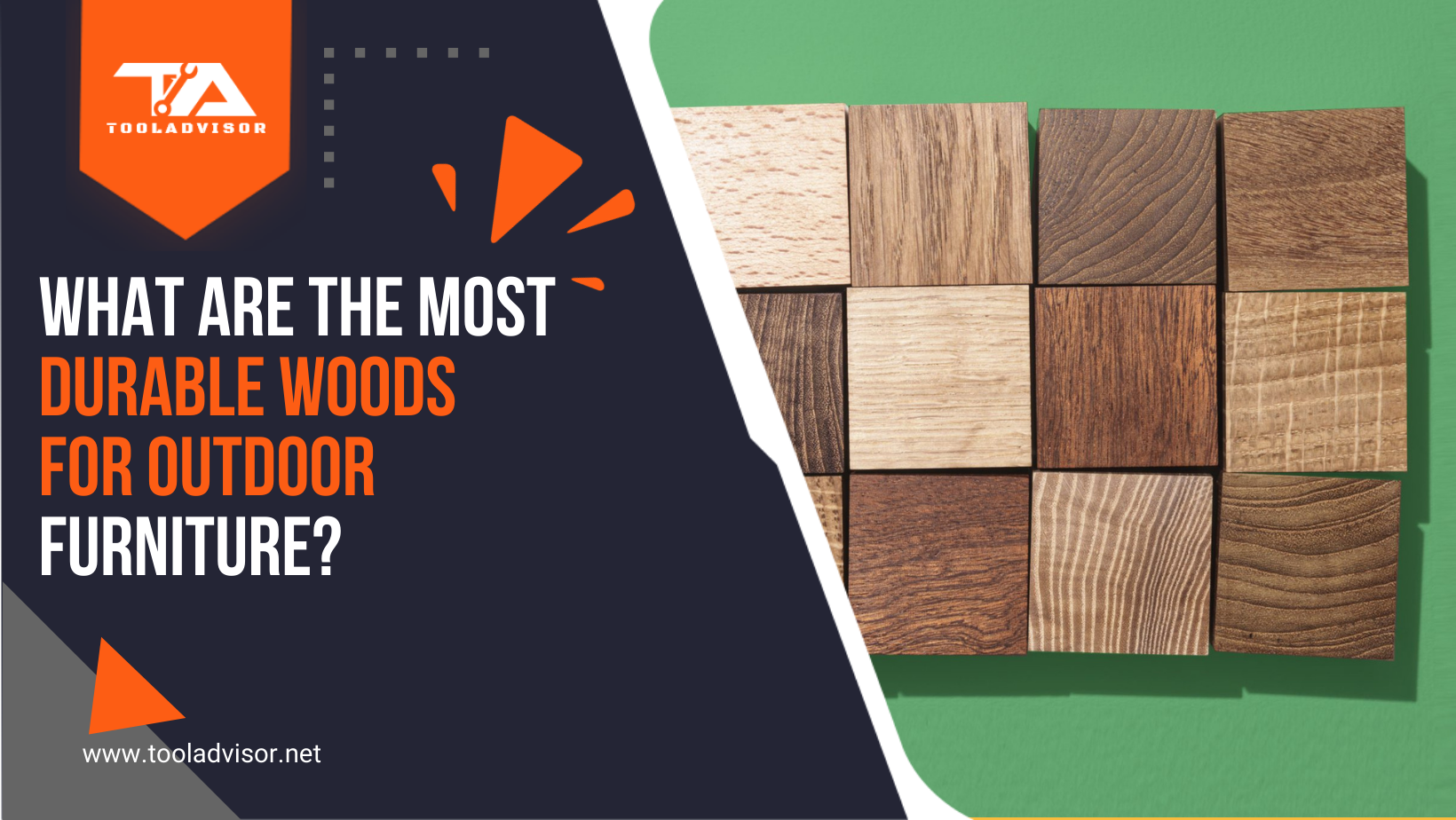If you have a beautifully landscaped yard, a pair of garden benches can be an excellent place to start. A comfortable bench underneath your favorite tree or at a meandering path’s end can unreel the stress of daily life. It’s so peaceful, isn’t it?
When it comes to outdoor furniture, you will find an array of materials used to build them. However, it’s pretty hard to beat the allure and warmth of natural wood. Humans acknowledged wood’s glory, versatility, and malleability hundreds of years ago. And it is still much appealing as it was at that time.
The wood’s modular patterns, earthy tones, and arresting grains boost the natural landscape, creating the perfect aesthetic for any courtyard. But:
All wood types are not good for outdoor furniture.
There is no shortage of wood species out there. But only a few can make excellent wooden outdoor furniture, and the task can be challenging.
So which is the perfect wood for outdoor furniture? Let’s find out the best wood variety for outdoor furniture so that your garden benches stand the test of time.
Table of Contents
The Best Woods for Outdoor Furniture
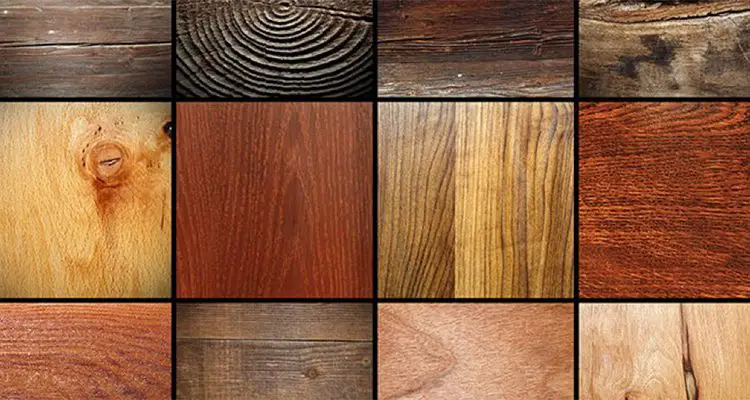
For those who are unaware, you can classify wood into two types that epitomize wooden furniture.
- Hardwoods
- Softwoods
Both these varieties are gradable, and you get aesthetic as well as structural advantages and disadvantages. But what’s the main difference?
Softwoods aren’t strong and dense as much as hardwoods.
However, both softwoods and hardwoods have weather-resistant subgroup species, perfect for making outdoor furniture. Among softwoods, you can choose between Redwood, Cedar, and Cypress. Each of them possesses natural properties of moisture-wicking and, thus, is great for outdoor use.
However, many people would prefer hardwoods for garden furniture to softwoods. Nevertheless, let’s begin with the most preferred and valuable wood choice for outdoor furniture –
Also Read: Top 5 Power Tools You Need to Buy for Your Woodshop?
1. Teak
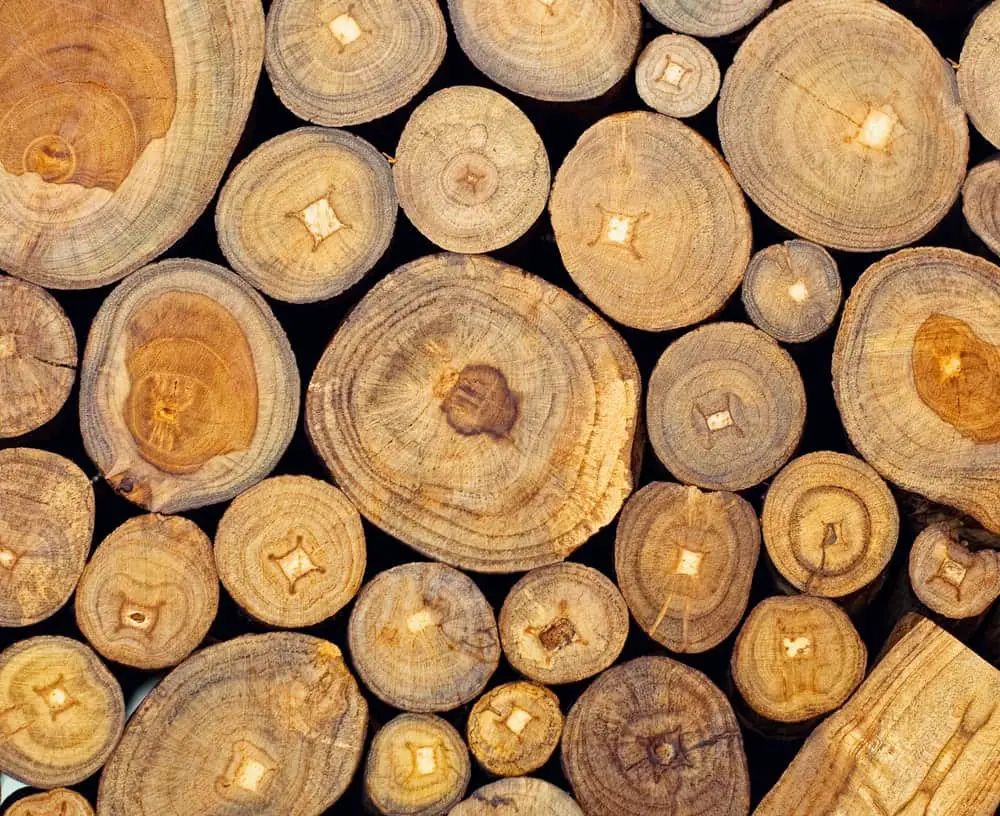
You can say that teak is the monarch of outdoor woods. This beautiful tropical hardwood makes a popular wood choice due to its high durability, excellent weather-resistant properties, and especially rot-resistant. Plus, it is straight-grained, reasonably dense, crack-resistant, and boasts a striking appearance. In addition, it’s the strongest hardwood available in the market.
Teak has been a prime choice for building boats and ships for centuries. And while it can combat any weather conditions and is resistant to insects, people prefer this hardwood for high-end outdoor furniture.
- The natural oils in this wood species act as extractives that daunt some insects.
- The natural oils also serve as water repellent.
- Moreover, this wood doesn’t respond to humidity changes by expanding or shrinking as much as many others.
Eventually, you want to fret about the formation of cracks on the wood’s surface that tends to retain moisture. And moisture will catch insects’ attention and enhance fungi creation that damages the wood.
Teak doesn’t ask for high maintenance like Eucalyptus. It naturally develops a grey patina over time, evoking sophistication. However, if you want to retain its elegant light golden hue, experts suggest applying an oil coat yearly. It boasts nearly a buttery texture when machined and cut.
So you can use teak in two different ways –
One, maintain the beautiful buttery texture of the wood using teak oil. But remember, you have to constantly re-oil it.
Secondly, you can leave the wood unfinished. It would turn grey over time as the ultraviolet rays fade the color. In this case, it won’t require any maintenance.
Nevertheless, teak is the best choice for those who desire the highest quality but want minimal maintenance.
2. Ipe
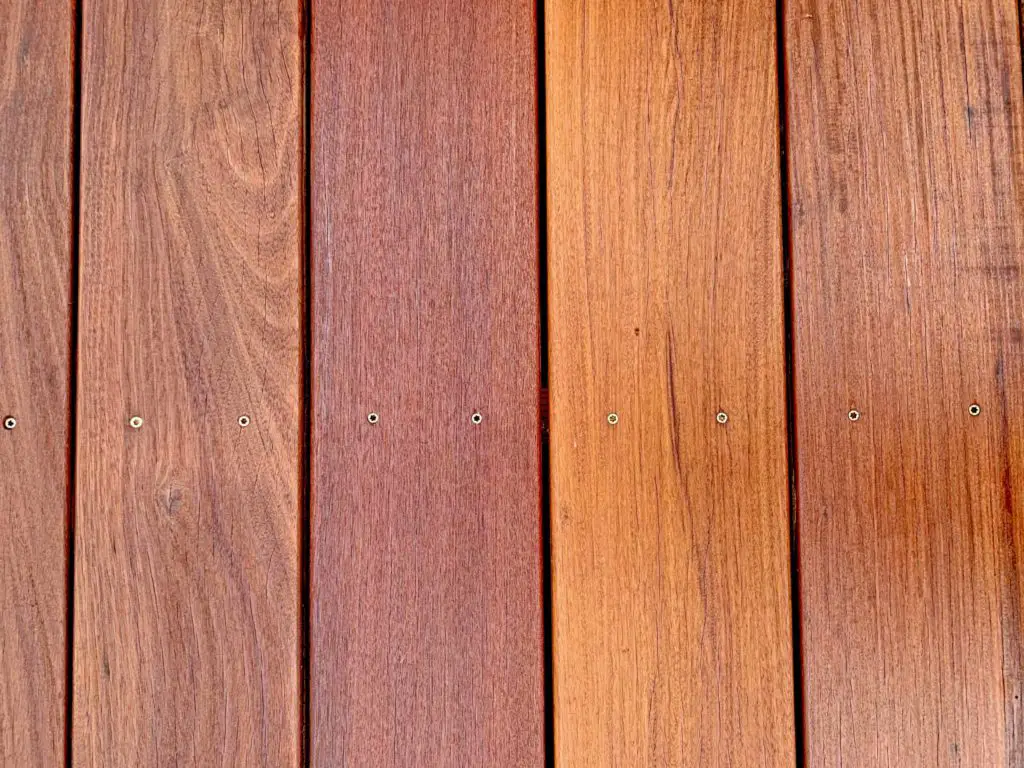
Another popular tropical hardwood species is Ipe, typically imported from South and Central America. In fact, Ipe is known to be the densest timber wood globally. It is so dense that it can hardly float!
However, this also signifies that Ipe would be more challenging to work with as it will render a high cutting resistance. Furthermore, even it isn’t easy to glue this wood properly. Thus, avoid choosing this wood type for furniture that depend on glue for structural coherence.
Then, what makes Ipe a good choice for outdoor furniture?
This wood species offers resistance to cracking, movement, warping, denting, and decomposing.
Furthermore, Ipe can withstand physical damage better than others while it is very hard.
Thanks to its extractive and oil content, you won’t worry about your outdoor furniture getting infected with fungi or insects.
Ipe is usually used for decking and flooring for gazebos because of its extreme density and weather-resistant properties. Nonetheless, the wood of outdoor furniture has to be resistant to scratches and dents. And in that case, Ipe is a great choice.
3. Cedar
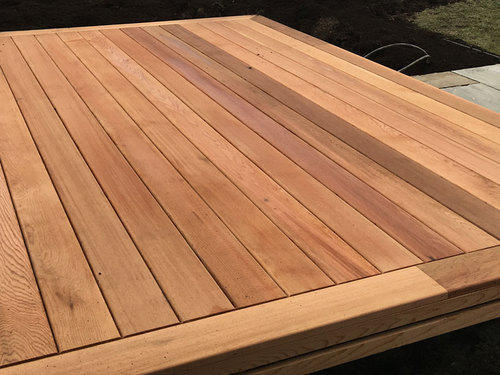
You may have the plan to rearrange or move your garden benches or patio during seasonal changes or any event. So you have to ensure that your furnishings are light enough to let you move it conveniently. With this in mind, Cedar would make a perfect choice.
Cedar is easy to work with because it is light and soft. Another great advantage of this wood species is that it can hold paints well. Thus, you can customize your cedar furniture to match other furnishings in your house. However, while it stains well, there is one drawback.
You have to bestow time maintaining by sealing and cleaning the Cedar. Otherwise, the soft grain will turn rough over the years. Another disadvantage is that this wood has a low ability to hold screws because of its softness. Nevertheless, it is a great choice for outdoor furniture as Cedar is resistant to termite, rot, and powder beetle.
Most North American cedar wood types have excellent rot and insect-resistant capability.
Read More: How to Use Table Saw | Different Types of Wood Cutting Techniques
4. Cypress
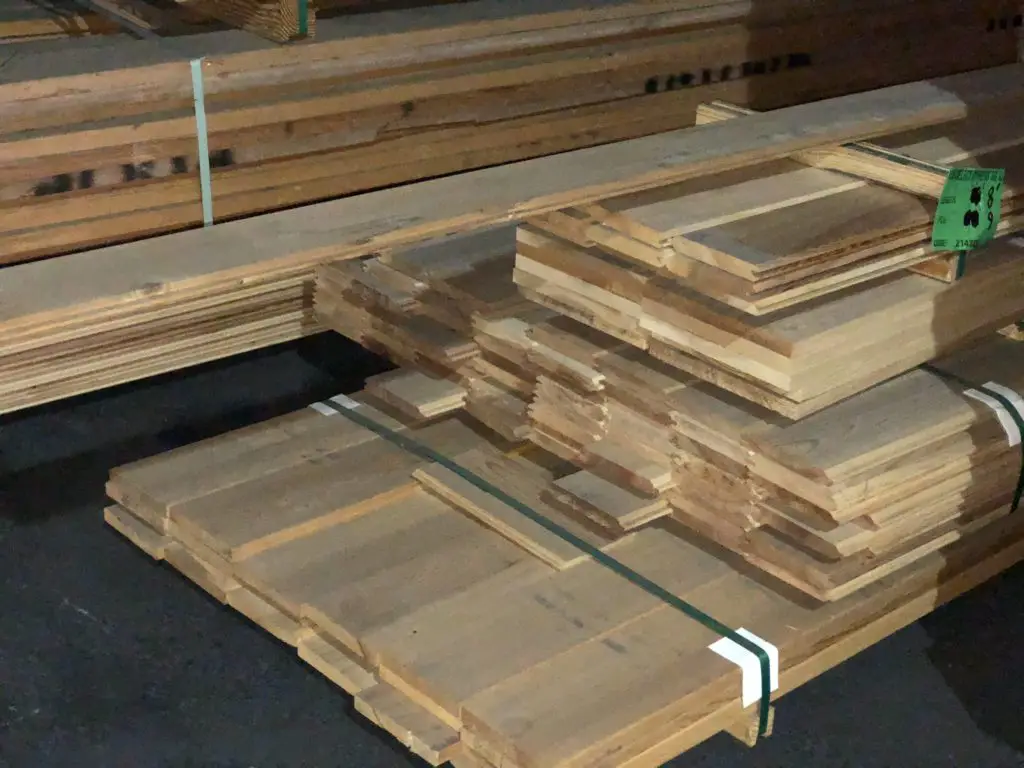
This softwood type is also famous for its natural extractives that offer resistance to both insects and rot. Like Cedar, Cypress attains a silvery grey patina exposed to the sun. However, the wood color originally varies from reddish-brown to dark and light-yellow brown.
So why can Cypress be a good wood for your outdoor furniture?
Cypress is visually appealing, thanks to its beautiful grain pattern. Moreover, if you paint it, the color pops up vibrantly due to the wood’s grain and lighter hue. Thus, it’s obvious to capture visitors’ attention. Plus, although Cypress is very lightweight, it stays pretty stable.
Cypress can be an appealing option if you want your outdoor furnishings to stand out.
5. Black Locust
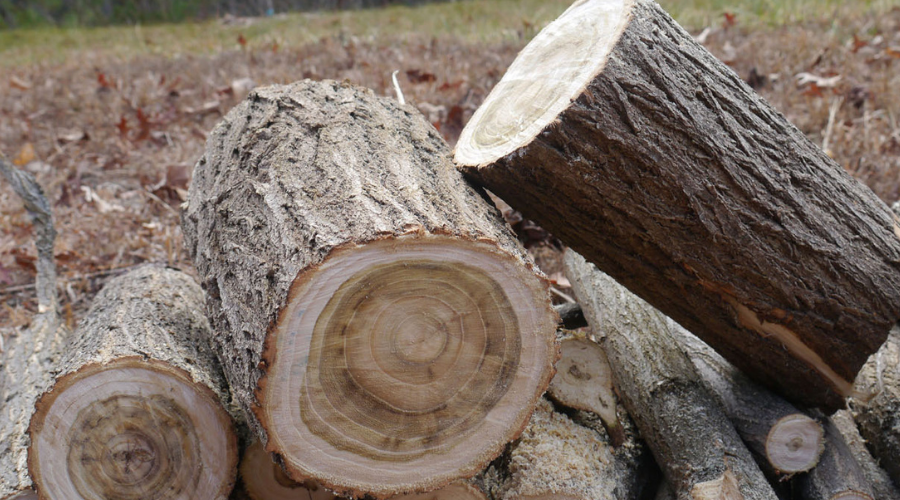
It is among the stiffest and strongest woods in the world. Black Locust’s biggest competitor for the title of strongest in Hickory. However, if you compare, Black Locust will get more preference. This is because this wood variety offers more stability and resistance to rot. Now, this ensures the wood’s durability and reliability in all weather conditions.
Furthermore, you will find it easier to work with than others. The fascinating fact is that Black Locust represents mixed characteristics. It boasts straight grain. However, while it has high hardness and density, it can be hard to machine. In addition, the blunting effect it offers is moderate on cutting edges. Black locust also goes well with steam bending and lathe turning.
What’s the best thing? First, it is cost-effective, and secondly, it exhibits beautiful patterns uniformly. That makes it perfect for building benches or tables.
And thanks to its excellent strength, Black Locust makes a great choice for outdoor furniture. It can withstand any weather conditions.
6. Acacia
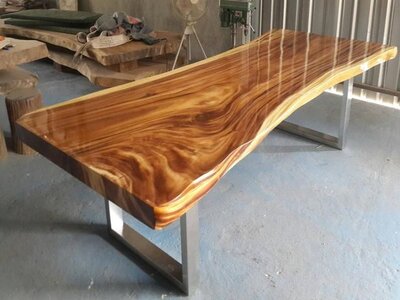
Here’s an eco-friendly wood variety for people who care about sustainability. Acacia is known to be an invasive species as they grow abundantly in several parts of the world. Thus, they make an affordable option for outdoor furnishing. Well, this thick hardwood contains a high amount of oil. As a result, it offers resistance to insects and rotting.
Acacia is durable and offers impressive resistance to elements. It is often used for making boats because of its abundance and water-resistant capability. This wood species exhibits a rich golden brown hue when sealed. However, if you leave it unsealed, the color may fade being exposed to water. Thus, you have to make sure that your acacia wood furniture does not contact the ground or grass as they may suck the moisture.
7. Redwood
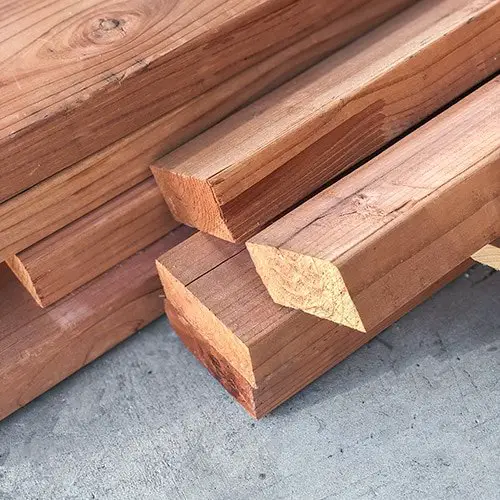
The natural resistant ability to moisture and insect makes Redwood the most popular choice for outdoor furniture. While it contains little resin and pitch, Redwood grasps finishes well. However, it’s not a sustainable or environment-friendly option. In addition, Redwood takes time to grow, which means that the supply is limited.
You can consider it as a lavish wood species that has excellent qualities and is expensive lumber to buy. Nevertheless, this wood is popularly used in the West for live-edge furnishings. It is also utilized in projects that ask for an elegant wide board. However, the drawback is that –
This is a softwood and prone to dings, chips, and dents. Furthermore, it can undergo tear-out when machining. But overall, Redwood is a magnificent wood that cuts pretty nicely. Plus, the movement is also minimal.
You May Also Read: Essential Woodworking Tools For Beginners
Conclusion
Wood is indeed an optimal and valuable choice for outdoor furnishings. It can make a garden bench or table look both classic and cozy. However, choosing the right wood type for your garden furniture is essential so that you can relish it for years. We hope our guide will help you select the best wood for outdoor furniture.
